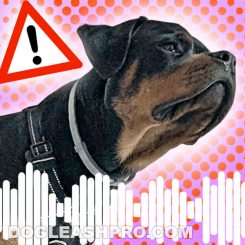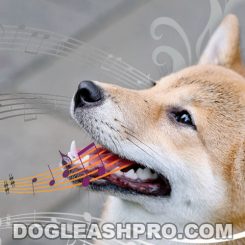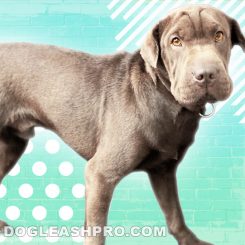
Do you hug or pet your dogs immediately after you come home from a long day at work? You’re not alone. Many dog owners do the same. Some dog owners are greeted with a soft crying sound because their dogs are hungry while others are greeted with kisses and excited tails wagging. Most will be greeted with a purring sound. This sound may remind you of a cat purr, but is it?
Let’s find out if dogs purr like cats.
Table of Contents
Do dogs Purr?
Dogs do not really purr. The canine sound people confuse with purring is called “rumbling” and is deeper than the feline purr. It sounds more like a “burr” or a soft growl than a purr.
Do dogs Purr when their owners cuddle or hug them?
Dogs do make a sound when their owners show them affection. It may sound like a purr, but it is actually called rumbling. You may notice your pups rumble when you hug or cuddle with them. This sound indicates that your pooch enjoys the activity and would like you to continue.
Why does my dog Purr when I pet him?
Dogs love getting pets, and they may show their appreciation for it in the form of a deep purr-like sound or a rumble. Your pooch being petted may rumble to let you know that he or she likes what you’re doing and wants you to keep doing it.
Why does my dog Purr like a cat?
The canine language is not just dependent on sounds but also posture and body language. The purr-like sound your dog is making can mean several things depending on what is happening at the moment, how your furry friend is feeling, and what their body language shows.
Why does it sound like my dog is Purring?
Sometimes when a dog is being petted, hugged, or anticipating a fun activity, they may make low growls or soft grunts sound. Experts have a name for this sound: rumbling. While a cat’s purr isn’t a part of its usual vocal range, a dog’s rumbling is a toned-down version of a regular growl.
Can dogs Purr?
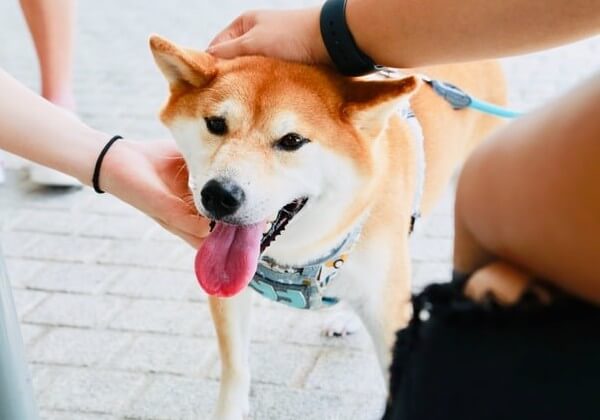
No, dogs can not purr. The deep rumbling sound dogs make is their version of purring. Owners of Rottweilers often observe purr-like sounds from their dogs when they are holding or petting them, but they are closer to a low growl than a purr.
Why do dogs Purr?
A dog’s purr can communicate several different emotions, such as:
1. Anticipation
Going for a walk
Dogs love the outdoors, and going out for a walk fills every canine with excitement. Even if they don’t make any sound, they can’t hide the low growl of anticipation, which resembles a purr.
Fun Fact: Both my Chihuahua and Labrador get very excited when they see me reaching for the keys and their dog leashes. My dog would walk in circles around me in anticipation and excitement and this behavior always cracks me up.
Playtime
Seeing a favorite toy means it’s time to play, and it excites all dogs. When it is playtime, dogs usually have a hard time containing their excitement and would make low rumbling sounds in anticipation.
Seeing a treat
Dogs love to eat. If your furry pal sees you reaching for a snack, they assume it is for them as well. They would make that adorable purring sound and wait in anticipation for you to give them the treat.
Seeing a loved one
There is a reason why dogs are considered our best friends and our most loyal friends. They love us unconditionally and selflessly. That’s why when they see their owner or loved ones approaching after being away, they can’t contain their excitement. Our canine companions show this excitement in the form of rumbling or purring.
2. Enjoyment
Getting petted
Our four-legged friends understand the affection behind their owners petting them and they enjoy every second of this. The rumbling sound they sometimes make when being stroked is similar to what a cat sounds like in the same situation. This is probably why the whimpering growl is confused with purring.
Hugging
If you look up videos of dogs purring, it’s usually when their owner is hugging them. That’s because being in physical contact with their owner comforts them. Dogs — especially Rottweilers — would often display their pleasure in the form of low, affectionate growls similar to purrs.
Grooming time
You’d often notice your dog making the rumbling burr sound when you are brushing their fur, cutting their nails, or cleaning them. Take it as a sign of gratitude for cleaning them. They often show it by closing their eyes and rumbling softly.
Massages
Just like massages are relaxing for us, our furry friends find massage comforting as well. Dogs would purr while being massaged to communicate to us that they enjoy it and would like you to carry on.
3. Warning
Threatening another dog or human
Dogs make a sound similar to purring when they are in a bad mood or when they do not like a person or animal. The sound they make is a little deeper than a regular rumble with an aggressive tone, and it is usually accompanied by bared teeth.
Unwanted activity
If your pups do not like something, they will always let you know. Trying to take away their toy, meeting a stranger, and being touched on an injured body part can make dogs uncomfortable. They express it as low growls.
Motherly instincts
Mommy dogs instinctively protect their newborn babies and don’t like others getting too close to them. If the mother dog feels any malicious intent from someone approaching her puppies, she will issue a warning through deep grrr sounds.
Playful warnings
Dogs tend to play and interact with each other and often make sounds that resemble a toned-down version of their brawling sounds. Playful warnings feature a softer version similar to a cat’s purr.
4. Melancholy
Playtime is over
Going back indoors, leaving a fun place, or getting away from their friends can make the dog sad for a little while. Your dog may purr and whine to show his unhappiness.
Saying goodbye
Saying farewell to a playmate isn’t a very joyful moment. Your furry friend may express that by making moaning or purring sounds, usually with drooping ears and tail.
Loneliness
Dogs are pack animals and are comfortable around companions. Being alone does not suit them, and they may convey their sadness through whimpers, rumblings, and low growls.
Being cooped up
Dogs don’t like staying indoors for too long. The rumbling is them may be requesting you to let them out. If your pooch is doing that and he hasn’t gone out in a while, try taking him out for some fresh air.
Health issues
Some health problems in dogs can cause severe pain. While dogs don’t show their pain, they may growl like a purring sound to try to release some of that pain. For instance, dogs that are suffering from tracheal collapse may have a difficult time breathing or it may sound like a low growl or purr sound they are trying to clear their throat.
If this is the case, we highly recommend that you consult with your vet right away.
5. Anxiety
Owner gone
Dogs don’t enjoy being left alone and can feel separation anxiety. If the dog’s owner is gone, he will make the low growling sound similar to a cat’s purr.
Strangers
A habit that makes dogs excellent guard animals is their anxiety around strangers. Even if the stranger is someone you’ve invited, your furry friend will take a while to warm up to them. A constant purring sound will signal the dog’s discomfort.
Storms
Thunder and lightning can scare anyone. But while we humans know the reason behind them, dogs have a hard time settling down with the loud noises. Your scared pooch will make a rumbling sound, and try to get close to you when this happens.
Change of environment
When puppies or dogs go to their forever home, they would need time to adjust to the new environment. An adjustment period is necessary. The dog will be anxious and uncomfortable in the new environment and voice it through occasional cat-like purrs.
What can dog owners do to ease anxiety?
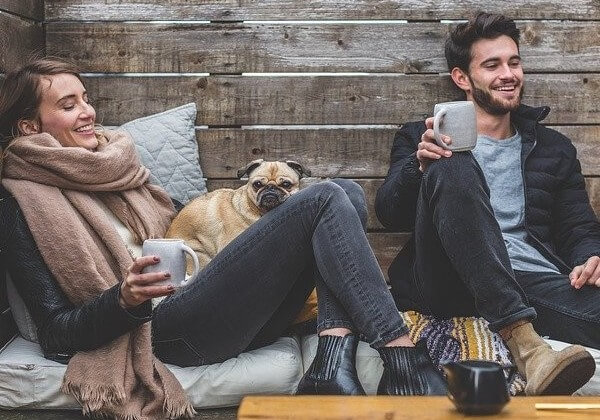
If your pooch is suffering from anxiety, here’s what you can do to comfort them:
- Don’t let them feel alone. If you’re leaving the house, take your pup to a daycare center, or turn the radio or TV on.
- Dogs will take a while to get used to a new environment. Help them get familiar with their surroundings by being patient with them and showing extra love and affection.
- If your dog is afraid of people, they need to be trained. Slowly get them used to the people who frequently visit your house.
- During lightning and thunderstorm, bring your canine companion inside. Try hugging or holding him so he doesn’t feel scared and alone. Petting him will also help him know that he is not alone and will feel much better.
Dogs do not Purr, but they do whimper
Purring in dogs isn’t the same as a cat’s; it’s more like a whimper. This sound can mean different things depending on the situation and the dog’s body language.
Other dog sound and their meanings
1. Bark
Barking is the signature dog sound. Depending on the pitch, loudness, and your pup’s body language, barking can show aggression, warning, or happiness. Adult dogs participate in barking matches to avoid getting physical. Barking can mean:
- I’m here!
- There’s danger around.
- I’m happy to see you!
- Go away, or I’ll bite!
2. Snarl
Snarls are almost always used to show displeasure or anger. Snarls or growls are usually a precursor to something more aggressive, like a loud bark or bite.
However, dogs sometimes use a low-pitched version of it during playtime. Depending on the posture, snarls can translate to:
- I am dangerous!
- I will bite you!
- I’m in severe discomfort.
- Stay away!
3. Howl
Canine ancestors used howls for long-distance communication. Dogs still use them today to announce their presence to other dogs in the vicinity. Howls are also contagious — one howl will almost always trigger another dog to do the same. Howls mean:
- I’m here!
- I miss my pack.
- This is my territory!
- I’m sad.
- I’m alone.
4. Yelp
No dog lover likes hearing a dog yelp. Dogs make this sound when they’re hurt or in pain. Yelps translate to:
- I’m in pain.
- I’m sick or injured.
- I give up.
5. Whine
Whines signify submissive displeasure, and dogs usually accompany this sound with lowered ears and a tucked tail. Dogs use it to voice their sorrow, embarrassment, sadness, longing, or fear. Whines mean:
- I’m sorry.
- I need something badly.
- I submit.
- I’m scared.
- I’m hungry.
6. Coughs and sneezes
Coughs or sneezes in dogs are usually involuntary. An occasional cough or sneeze is a sign that your pooch may have inhaled something irritating. However, if this becomes frequent, you may want to take your furry friends to the vet to get them checked up.
Conclusion
Related Questions
In a way, yes. A dog’s purring sound is called rumbling. It shows pleasure, satisfaction, or anticipation. Dogs often make this sound when they’re being petted to express gratitude and contentment.
Groaning can signal different things depending on the situation. But if your dog groans when you pet it, he or she is saying, “thank you, carry on.”
Dogs make several sounds when they’re happy, including growls, rumbling, groans, and barks. The sounds are accompanied by a wagging tail, open mouth, and raised ears.
Resources:
https://www.akc.org/expert-advice/advice/canine-communication-deciphering-different-dog-sounds/
https://en.wikipedia.org/wiki/Dog_communication

With over five years of specialized experience as an animal writer, my expertise lies in dog nutrition, health, behavior, grooming, and training. I am dedicated to delivering helpful and informative content that caters to the well-being of our furry friends. My primary goal is to empower pet owners with knowledge and ensure our canine companions thrive in health and happiness. In my free time, I love volunteering at local dog rescue centers.




